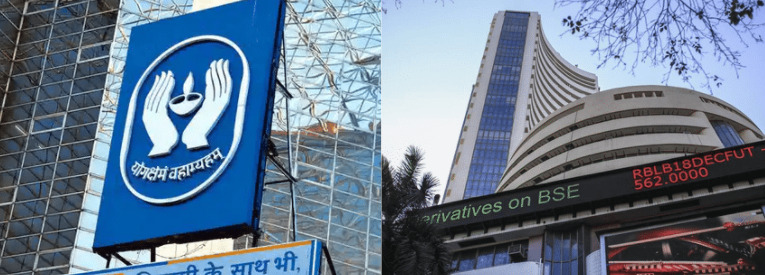Putting the Initial Public Offering (IPO) process of the LIC on the fast lane, the government has shortlisted 10 merchant bankers to manage the process. “Goldman Sachs Group Inc, JPMorgan Chase & Co, ICICI Securities Ltd, Kotak Mahindra Capital Co, JM Financial Ltd, Citigroup Inc and Nomura Holdings Inc are among the 10 BRLMs that have been shortlisted,” said an official.
In this year’s budget, the government has estimated Rupees 2.11 Lakh Crore receipts from disinvestment, which is the highest ever. The target for dispossession in the next fiscal year is almost double the last fiscal year’s target.
Read More: If you wish to make money, brace up for LIC IPO, the biggest privatization of the decade
To reach the Rupees 2.1 Lakh Crore divestment target, the government plans to list LIC – the cash milch cow of the government – to the stock market. The analysts expect that the total market capitalization of LIC would be more than Rupees 10 Lakh Crore and the government will probably divest 10 per cent in the IPO. The valuation of LIC is expected to be around Reliance Industries Limited and Tata Consultancy Services – the largest Indian companies in terms of market capitalization.
The 6 decades old LIC is among the largest financial companies in the country with Rupees 31.3 lakh crore of assets under management. The company has a total of 29 crore policyholders, which means an average family of the country has more than 1 LIC policy; given the fact, there are 25 crore families. LIC has more than 1.1 Lakh employees and more than 11 lakh agents.
The listing of LIC is being compared with the IPO of Saudi Aramco- the state-owned Oil and Gas Company of Saudi Arabia and Indian analysts have already called it the IPO of the decade.
The listing and privatization of profit-making PSUs show the policy change and fundamental shift in the political economy of India. So far, the privatization of profit-making companies was a sort of sin in India, especially if the government is being led by the Congress party.
But, the finance minister argued in favour of opening up PSUs to the investor’s scrutiny, and while talking about the listing of LIC, she said, “Listing of companies on stock exchanges discipline a company and provides access to financial markets and unlocks its value. It also gives an opportunity for retail investors to participate in the wealth so created. The government now proposes to sell a part of its holding in LIC by way of IPO.”
According to a government official, the listing of LIC would bring more than 60 per cent of insurance business with listed entities, which means these companies would go under greater public scrutiny and there would be little chance of failure. “A majority of these have crossed their initial breakeven phase. Once the proposed listing of LIC happens, about 60 per cent of the insurance industry business would be with listed entities. The sector as a whole has been growing at a pace significantly higher than that of the overall economy,” said Additional Secretary in the Finance Ministry Amit Agarwal.
The listing of LIC is in sync with the political-economic philosophy of the Economic Survey, which argued in favour of privatization using historical examples. The survey also presented data and argued that the sectors liberalized grew faster than those under government control in the last three decades. The Survey divided the political economy of the county into two parts- the pre-liberalization era and the post-liberalization era. The post-1990s was presented as some sort of rebirth for the Indian economy and this shows the government’s trust in the private sector. The list of LIC, the largest profit company under the Indian government is the best example of the government’s changing mindset.
